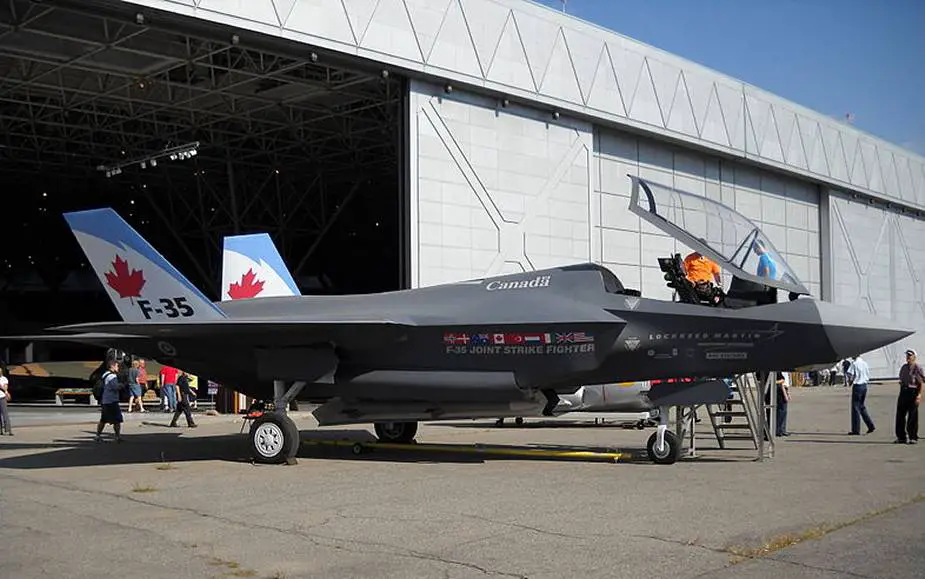The Canadian government has approved funding to purchase the first batch of Lockheed Martin F-35 Lightning II fighter jets: Canada’s Treasury Board gave the Department of National Defence the green light to spend CA$ 7 billion (US$5,14 Billion) on the jets, Vakius Venckunas reports in Aero Time. News of the funding decision caught Saab unawares on Tuesday, December 20, CTV reports: "Given that Saab remains eligible for selection in the formal procurement process, we are surprised by today's media report," Saab Canada spokeswoman Sierra Fullerton said in a statement. "Saab is committed to the offer we made to the government of Canada, which was significantly less than the $19 billion budgeted for the full 88 aircraft requested."
Follow Air Recognition on Google News at this link
 Wooden mock-up of the Lockheed Martin F-35 Lightning II in Canadian Forces markings displayed in 2010 at the Classic Air Rallye, Canada Aviation and Space Museum, Rockcliffe Airport (Picture source: Wikipedia)
Wooden mock-up of the Lockheed Martin F-35 Lightning II in Canadian Forces markings displayed in 2010 at the Classic Air Rallye, Canada Aviation and Space Museum, Rockcliffe Airport (Picture source: Wikipedia)
While the federal government said it plans to buy 88 new F-35s to replace its CF-18s between 2026 and 2032, sources said Canada will be purchasing F-35s in blocks over the next few years. The reasons for such a phased approach vary based on each country's budgetary process and their respective military's ability to accept and support the transition to a new aircraft. It is also based on Lockheed Martin's production schedule and other orders. The Treasury Board approval covers an initial set of 16 F-35s, as well as spare parts, weapons and various startup costs associated with obtaining new jets, such as building new facilities.
The approval could mark the final step in the Canadian F-35 saga, which has dragged on for more than a decade and resulted in countless twists, Vakius Venckunas comments. Indeed, Canada revealed its plan to order a fleet of F-35s in 2010. The new jets were slated to replace the country’s aging fleet of CF-18 Hornets, special versions of McDonnel Douglas F/A-18s that have been serving with the Royal Canadian Air Force (RCAF) since the 1980s.
Canada was also one of the members of the Joint Strike Fighter program and heavily invested into the development of the F-35. However, following a change of government and some budget cuts, the order hung in the balance, Vakius Venckunas recalls. A new tender for a replacement fighter jet fleet was launched in 2017, resulting in a competition between the F-35, Boeing F/A-18 Super Hornet, Eurofighter Typhoon, Dassault’s Rafale, and Saab JAS 39 Gripen.
By 2021, only the F-35 and JAS 39 Gripen remained after other contestants either withdrew offers or were rejected. In early 2022 the F-35 was picked again, with the country’s Ministry of National Defense commenting that the fifth-generation offered the best outcome for the RCAF, Vakius Venckunas summerizes.
















